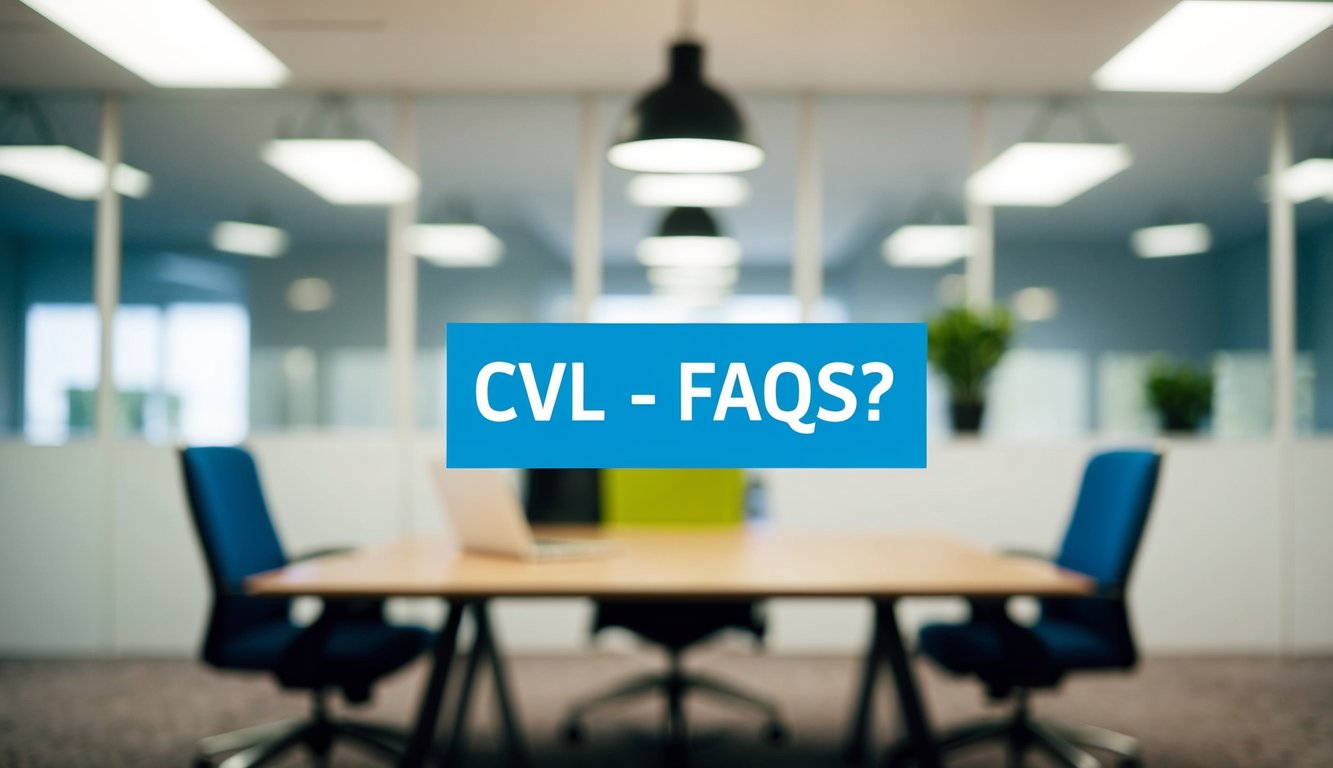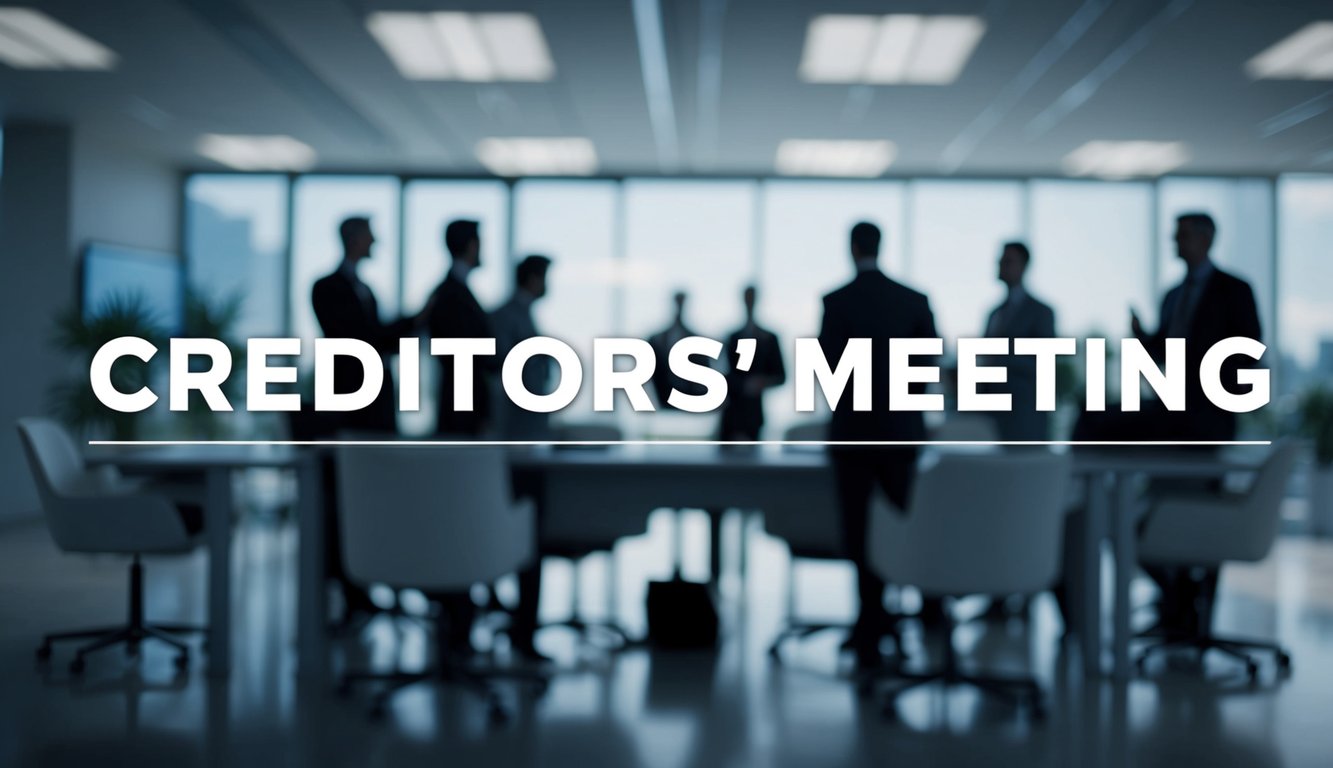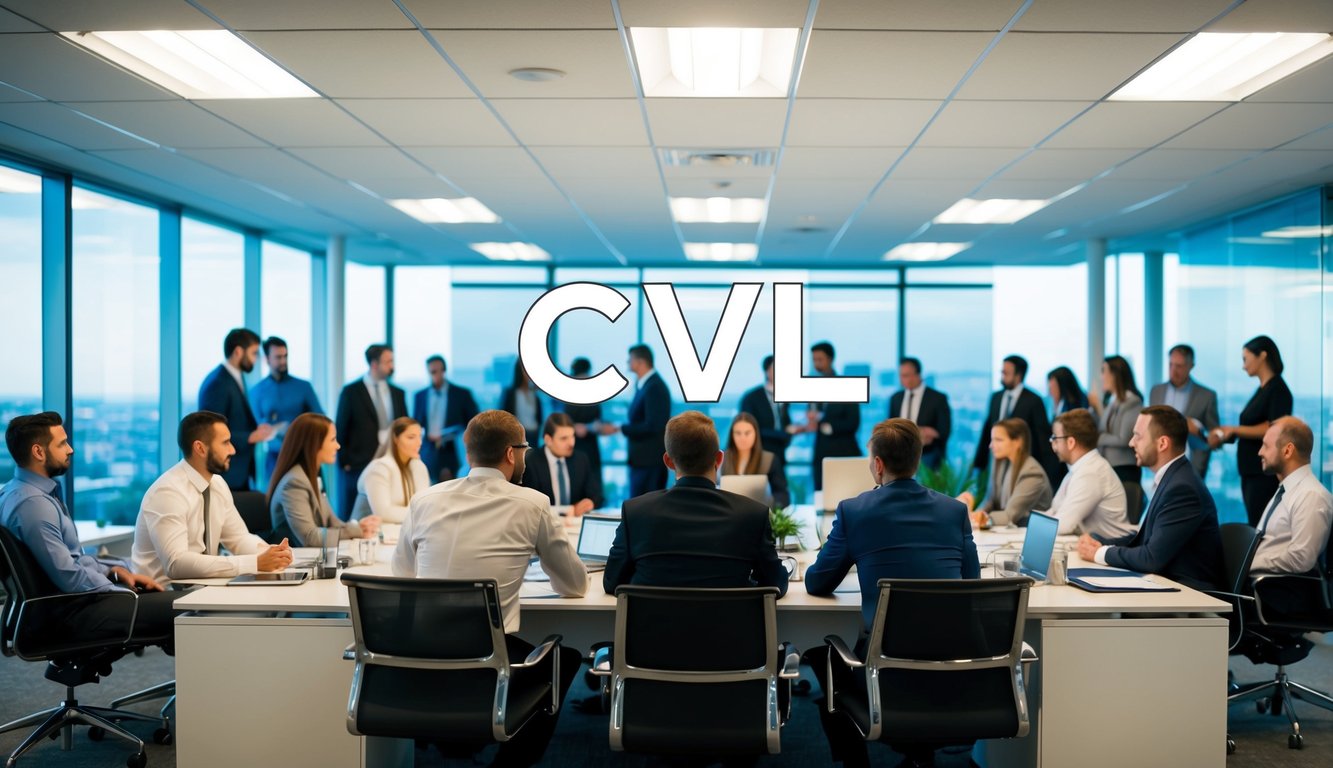What Does the Creditors’ Meeting Involve During a CVL? Key Steps and Procedures Explained
The Role of the Creditors’ Meeting in a CVL
The creditors’ meeting serves as a key platform for communication and decision-making in a Creditors’ Voluntary Liquidation (CVL). It allows creditors to participate actively in the liquidation process and ensures transparency in the company’s financial affairs.
Quick Facts – Business Owner’s Role in a Creditors’ Meeting During a CVL
A creditors’ meeting in a CVL allows creditors to review and approve the company’s liquidation and appoint an insolvency practitioner.
As the business owner (director), you must present the company’s financial position, explain why the company is liquidating, and answer creditor questions.
You’ll need to prepare:
- A Statement of Affairs (company assets, liabilities, and creditors).
- A Director’s Report (reasons for insolvency and liquidation).
At the meeting, the insolvency practitioner outlines the process, you present financial details, and creditors ask questions before voting on the liquidation.
Directors must attend (in person or remotely). Creditors may question debts, transactions, and asset plans. If they reject proposals, changes may be needed, but liquidation usually proceeds.
The meeting lasts 30–60 minutes. If approved, liquidation starts, and the insolvency practitioner takes control. At Anderson Brookes, we have worked with thousands of company directors and owners and can guide you through this process. We are also happy to discuss or stop the process (placing a business into liquidation within 8 days):
Free Consultation – advice@andersonbrookes.co.uk or call on 0800 1804 935 our freephone number (including from mobiles).
Purpose of the Creditors’ Meeting
The primary purpose of the creditors’ meeting is to provide comprehensive information about the company’s financial position. You’ll receive a detailed Statement of Affairs, which outlines the company’s assets and liabilities. This document helps you understand the extent of the company’s insolvency and the potential for recovering debts.
During the meeting, you have the opportunity to:
- Question the company directors about the circumstances leading to insolvency
- Appoint a liquidator (or confirm the one proposed by shareholders)
- Establish a liquidation committee to oversee the process
- Vote on important decisions regarding the liquidation
The meeting also allows the proposed liquidator to explain their role and outline the expected timeline for the liquidation process.
Importance for Stakeholder Involvement
Your involvement as a creditor is vital for ensuring a fair and transparent liquidation process. The creditors’ meeting gives you a voice in key decisions that may affect the outcome of the liquidation and your potential recovery.
By attending the meeting, you can:
- Gain insights into the company’s financial situation
- Express concerns or raise questions about the liquidation process
- Influence the appointment of the liquidator
- Participate in voting on crucial matters
Your active participation helps protect your interests and those of other creditors. It also contributes to the overall efficiency and effectiveness of the CVL process.
Remember, if you can’t attend in person, you can typically appoint a proxy to represent you at the meeting. This ensures your voice is heard even if you’re unable to be there physically.
Book a free consultation today [/fusion_button]
Who Attends the Creditors’ Meeting?
The creditors’ meeting brings together key stakeholders involved in the Creditors’ Voluntary Liquidation (CVL) process. Directors, creditors, and the appointed insolvency practitioner each play important roles during this crucial gathering.
Directors’ Obligations During the Meeting
Directors are required to attend the creditors’ meeting and provide a comprehensive statement of the company’s affairs. You’ll need to prepare a detailed account of the company’s financial position, including assets, liabilities, and reasons for insolvency. Be prepared to answer questions from creditors about the company’s trading history and financial decisions.
Directors must also:
- Present a list of creditors and their claims
- Explain any transactions that may be subject to investigation
- Propose a liquidator for appointment
Your honest and transparent participation is crucial for a smooth liquidation process.
Rights and Roles of Creditors
As a creditor, you have the right to attend the meeting and voice your concerns. Your role includes:
- Reviewing the statement of affairs presented by directors
- Asking questions about the company’s financial situation
- Voting on important decisions, such as the appointment of a liquidator
You can attend in person or appoint a proxy to represent your interests. Creditors with voting rights can influence key decisions in the liquidation process. It’s important to submit your claim before the meeting to ensure your voice is heard.
Role of the Insolvency Practitioner
The insolvency practitioner plays a central role in the creditors’ meeting. Their responsibilities include:
- Chairing the meeting and ensuring proper procedures are followed
- Presenting an objective assessment of the company’s financial position
- Answering creditors’ questions about the liquidation process
- Facilitating the vote for the appointment of a liquidator
The practitioner must remain impartial and act in the best interests of all creditors. They provide expert guidance on the CVL process and help ensure that all legal requirements are met during the meeting.
Preparation for the Creditors’ Meeting
Thorough preparation is crucial for a successful creditors’ meeting during a Creditors’ Voluntary Liquidation (CVL). You’ll need to compile financial records, notify creditors, and ensure all documentation meets legal requirements.
Preparing the Statement of Affairs
The Statement of Affairs is a key document you must prepare. It provides a snapshot of your company’s financial position, including assets, liabilities, and creditors’ details. You should:
- List all company assets and their estimated realisable values
- Detail all creditors, including amounts owed and security held
- Include preferential creditors like employees and HMRC
- Provide a summary of your company’s recent financial history
Seek help from your accountant or insolvency practitioner to ensure accuracy. This document forms the basis for discussions at the creditors’ meeting, so it’s vital to be thorough and transparent.
Issuing Notices to Creditors
You must formally notify all creditors about the impending liquidation and creditors’ meeting. This involves:
- Sending a notice of the meeting to all known creditors
- Providing details of the date, time, and location (or virtual meeting information)
- Including a summary of the company’s financial position
- Explaining creditors’ rights to vote and appoint a proxy
Ensure notices are sent within the legally required timeframe, typically 14 days before the meeting. Keep records of all communications for your files.
Meeting Documentation and Timing Requirements
Proper documentation and timing are critical for a valid creditors’ meeting. You must:
- Prepare a detailed agenda for the meeting
- Compile all necessary financial reports and statements
- Ensure the Statement of Affairs is ready for presentation
- Arrange for minutes to be taken during the meeting
Timing is crucial. You should:
- Schedule the meeting within 14 days of the shareholders’ resolution to liquidate
- Allow sufficient time for creditors to review documents and appoint proxies
- Be prepared to answer questions about the company’s financial affairs
Consult with your insolvency practitioner to ensure all legal requirements are met.

What Happens During the Creditors’ Meeting?
The creditors’ meeting is a crucial step in the Creditors’ Voluntary Liquidation (CVL) process. It provides an opportunity for creditors to gain insights into the company’s financial situation and the proposed liquidation plan.
Presentation of the Statement of Affairs
The meeting begins with the presentation of the Statement of Affairs. This document offers a comprehensive overview of the company’s financial position, including:
- Assets and their estimated values
- List of creditors and amounts owed
- Details of any secured creditors
- Estimated deficiency or surplus
The insolvency practitioner explains the Statement of Affairs, highlighting key points and answering initial questions. This presentation helps creditors understand the company’s financial standing and the likelihood of recovering their debts.
Explanation of the Proposed Liquidation Plan
Following the Statement of Affairs, the insolvency practitioner outlines the proposed liquidation plan. This includes:
- Steps to realise the company’s assets
- Estimated timeframe for the liquidation process
- Projected dividend for creditors
- Potential investigations into the company’s affairs
The practitioner may discuss any challenges or opportunities they foresee in the liquidation process. They’ll also explain how creditors can submit claims and stay informed throughout the proceedings.
Creditors’ Questions and Discussions
This part of the meeting allows creditors to ask questions and voice concerns. You may inquire about:
- Reasons for the company’s insolvency
- Directors’ conduct leading up to the liquidation
- Prospects of asset realisation
- Timeline for potential dividend payments
The insolvency practitioner will address these queries to the best of their ability. This Q&A session helps ensure transparency and allows creditors to make informed decisions about the liquidation process.
Voting Procedures and Outcomes
Creditors play a crucial role in decision-making during a Creditors’ Voluntary Liquidation (CVL). Their votes determine the company’s future and the appointment of key personnel.
How Creditors Vote on Resolutions
Creditors vote on resolutions through various methods. You can cast your vote in person, by proxy, or via electronic means if available. Each creditor’s voting power is typically proportional to the amount owed to them by the company.
To vote, you’ll need to submit a proof of debt form detailing your claim against the company. This form must be lodged before the meeting or at the start if you’re attending in person.
Resolutions are usually passed by a simple majority (over 50%) of the total value of creditors voting. Some decisions may require a higher threshold, such as a 75% majority for certain special resolutions.
What Happens if Resolutions Are Rejected?
If creditors reject a resolution, the consequences depend on the nature of the decision. For instance, if creditors vote against the liquidator’s appointment, an alternative candidate may be proposed and voted upon.
In cases where creditors reject the liquidator’s fee proposal, the matter might be referred to court for determination. The court can set the liquidator’s remuneration based on the work performed and expected to be done.
If creditors disagree with the proposed strategy for dealing with the company’s assets, the liquidator may need to revise their plans and present an alternative approach for consideration.
Next Steps After a Vote is Passed
Once a resolution passes, the agreed actions are implemented promptly. If you’ve voted to appoint a liquidator, they’ll take control of the company’s affairs and begin the liquidation process.
The liquidator will:
- Gather and sell the company’s assets
- Investigate the company’s affairs
- Distribute funds to creditors according to the statutory order of priority
You’ll receive regular updates on the liquidation’s progress through reports and meetings. The liquidator may call additional creditors’ meetings to seek approval for specific actions or to provide updates on significant developments.
Remember, you have the right to request information from the liquidator throughout the process. Stay engaged to protect your interests and ensure the liquidation proceeds efficiently.

Challenges and Disputes in Creditors’ Meetings
Creditors’ meetings can sometimes involve disagreements and conflicts that need careful handling. Disputes may arise over various aspects of the liquidation process, requiring diplomatic resolution.
Handling Creditor Disagreements
Creditors may disagree on the proposed liquidation plan or the appointment of the liquidator. To address this, you can:
- Encourage open dialogue amongst creditors
- Provide clear explanations of the liquidation process
- Allow time for questions and clarifications
If conflicts persist, consider bringing in a mediator or independent expert to help reach a consensus. It’s crucial to document all discussions and decisions made during the meeting for transparency.
Resolving Disputes Over Claims or Assets
Disputes over claims or assets can complicate the liquidation process. To manage these effectively:
- Review all claims thoroughly before the meeting
- Present clear evidence supporting asset valuations
- Establish a fair system for prioritising claims
If disagreements continue, you may need to:
- Seek legal advice on complex claims
- Use alternative dispute resolution methods
- Consider appointing an independent assessor
Remember, the goal is to reach a fair resolution that maximises returns for all creditors while adhering to legal requirements.
How Anderson Brookes Ensures Successful Creditors’ Meetings
Anderson Brookes takes a meticulous approach to creditors’ meetings in Creditors’ Voluntary Liquidation (CVL) proceedings. Their expert team focuses on thorough preparation and skilled mediation to facilitate productive discussions between all parties involved.
Expert Preparation and Documentation
Anderson Brookes’ insolvency practitioners begin by compiling comprehensive financial reports and liquidation proposals. These documents clearly outline the company’s financial position, assets, and liabilities. The team ensures all creditors receive detailed information packs well in advance of the meeting.
To streamline the process, Anderson Brookes implements an efficient sign-in system. This verifies that only authorised individuals attend the meeting, maintaining confidentiality and order. Their practitioners also prepare concise presentations to explain complex financial matters in accessible terms.
The firm utilises secure virtual meeting platforms when necessary, providing clear instructions for remote participation. This flexibility ensures maximum creditor engagement, regardless of geographical constraints.
Professional Mediation for Creditor Disputes
Anderson Brookes’ experienced practitioners act as impartial mediators during creditors’ meetings. They create an environment where all creditors can voice their concerns and ask questions without fear of judgement.
The team employs active listening techniques to understand each creditor’s position fully. They then facilitate constructive dialogues, helping to find common ground between conflicting parties. When disputes arise, Anderson Brookes’ practitioners draw on their extensive knowledge of insolvency law to propose fair solutions.
To maintain transparency, the firm meticulously records all discussions and decisions made during the meeting. They promptly distribute detailed minutes to all creditors, ensuring everyone has a clear understanding of the proceedings and agreed-upon actions.

Frequently Asked Questions
Creditors’ meetings play a crucial role in the Creditors’ Voluntary Liquidation (CVL) process. These gatherings provide important information and opportunities for stakeholders involved in the insolvency proceedings.
What are the main proceedings in a creditors’ meeting during insolvency?
The main proceedings include reviewing the company’s financial situation and appointing a liquidator. Creditors can ask questions about the company’s affairs and vote on key decisions.
The meeting also involves discussing the reasons for the company’s failure and potential recovery options.
What should be expected by stakeholders at the initial meeting of creditors in a CVL?
Stakeholders can expect to receive a detailed report on the company’s financial position. The proposed liquidator will present this information and explain the reasons for the company’s insolvency.
Creditors will have the opportunity to ask questions and vote on the appointment of the liquidator. They may also form a creditors’ committee to oversee the liquidation process.
What timeline should creditors anticipate during the voluntary liquidation process?
Creditors should expect the CVL process to take several months to complete. The initial meeting is typically held within 14 days of the company’s decision to liquidate.
The liquidator will then gather and sell assets, which can take several weeks or months. Distribution of funds to creditors may occur in stages, with the final distribution often taking place after 6-12 months.
Can you outline the potential benefits and drawbacks of Creditors Voluntary Liquidation?
Benefits of CVL include orderly closure of the insolvent company and fair distribution of assets to creditors. It can also protect directors from accusations of wrongful trading.
Drawbacks include the likelihood of creditors receiving only a small percentage of their debts. The process can be costly, and employees may lose their jobs.
How is the concept of a creditors’ meeting explained in the context of business insolvency?
A creditors’ meeting in business insolvency is a formal gathering of a company’s creditors. It serves as a platform for creditors to receive information about the company’s financial situation and participate in key decisions.
The meeting allows creditors to voice concerns, ask questions, and vote on matters such as the appointment of a liquidator. It ensures transparency and fairness in the insolvency process.
Anderson Brookes Reviews

&





